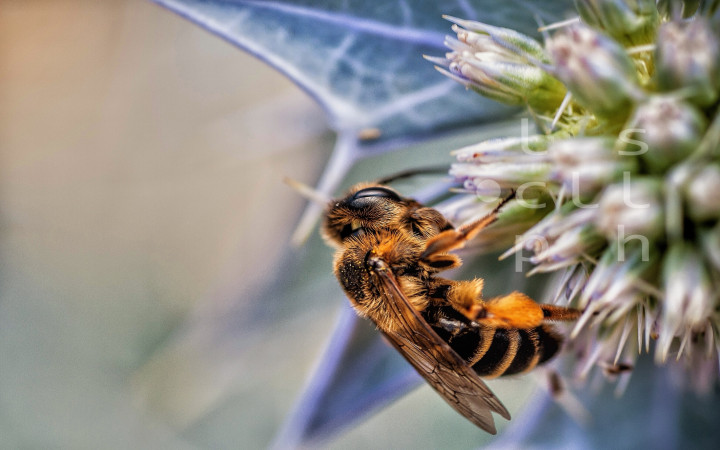Today’s Wonder of the Day was inspired by Lucas. Lucas Wonders, “How do bees pollinate?” Thanks for WONDERing with us, Lucas!
Have you ever heard someone say that bees are responsible for one of every three bites of food you eat? That’s an estimate—it’s impossible to calculate exactly. However, it’s clear that bees play a vital role in food production. They are excellent pollinators!
Most food crops—including fruits, vegetables, nuts, and seeds—must go through pollination. That’s the process of moving tiny pollen cells between plants to help them make seeds.
How does pollination happen? It’s mainly accomplished by insects. And, of all the insects that pollinate plants and flowers, bees are by far the most important. They spend most of their lives collecting pollen. It’s a primary source of protein that they feed to their young.
When bees land on flowers, the hairs on their legs attract pollen cells through a force like static electricity. The bees store some of this pollen to take back to their nests. Other bits of it get left on other flowers, completing the process of pollination.
The flowers also reward the bees for their hard work. They produce sweet nectar that gives bees the nutrients they need to live their busy lives. In fact, you’ve probably heard the phrase “busy bee” in the past. That certainly holds true when you think about the important job they do for flowers and crops.
How many flowers can a bee pollinate in one day? About 5,000! If you think that’s amazing, consider this: To make one pound of honey, a hive of bees must travel over 55,000 miles and visit two million flowers!
Yes, bees certainly are busy. And today, they face many threats to their survival. Where would our world be without these hard-working furry insects? We’d rather not find out!
Standards: NGSS.LS1.A, NGSS.LS2.A, NGSS.LS4.D, CCRA.L.3, CCRA.L.6, CCRA.R.1, CCRA.R.2, CCRA.R.4, CCRA.R.10, CCRA.SL.1, CCRA.SL.2, CCRA.W.7




